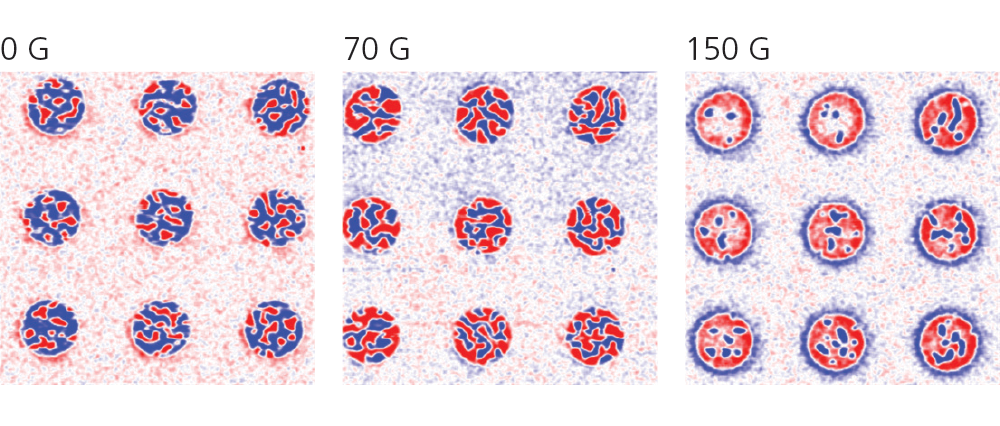24 Jul

Understanding and characterizing magnetic properties at the nanoscale is one of the key challenges in developing next-generation data storage and logic elements. The new Variable Field Module (VFM4) accessory for Asylum Research MFP-3D Atomic Force Microscopes (AFMs) enables measurements under applied in-plane and out-of-plane magnetic fields in order to better understand their effects on nanoscale magnetic domain structure. The VFM4 is capable of applying either an adjustable in-plane (±8000 G ) or out-of-plane (±1200 G) magnetic field to a sample and offers ~1 G field resolution. Researchers can learn more about the VFM4 and see recent results at http://afm.oxinst.com/VFM4.
“This new combination of capabilities has allowed one customer at a national synchrotron facility to use AFM for research that was previously only possible with very costly and time-consuming scanning x-ray transmission microscopy (SXTM),” said Dr. Maarten Rutgers, Director of New Product Introduction. “No other AFM commercial solution offers the same capabilities, versatility, and ease of use for magnetics research. While the VFM has traditionally been used for magnetic force microscopy experiments, it can also be used with techniques like conductive AFM (CAFM) and on a wide range of diverse samples including piezoelectric and ferroelectric materials.”
The VFM4 easily attaches to most Asylum Research MFP-3D AFMs and includes replaceable pole tips to quickly adapt between in-plane and out-of-plane configurations. It maintains a steady magnetic field with rare-earth magnets that produce no heat, thermal drift, or mechanical vibration. For experiments where both an applied magnetic field and a high tip-sample voltage bias are required, there is an optional high-voltage kit to adapt the VFM4 for safe application of voltages up to ±220 Volts.
Image caption: Magnetic skyrmions in Co-based thin film pads imaged with MFM under out-of-plane magnetic fields. Image courtesy of K. Bouzehouane, Unité Mixte de Physique CNRS, Thales, Univ. Paris-Sud, Université Paris-Saclay France.





